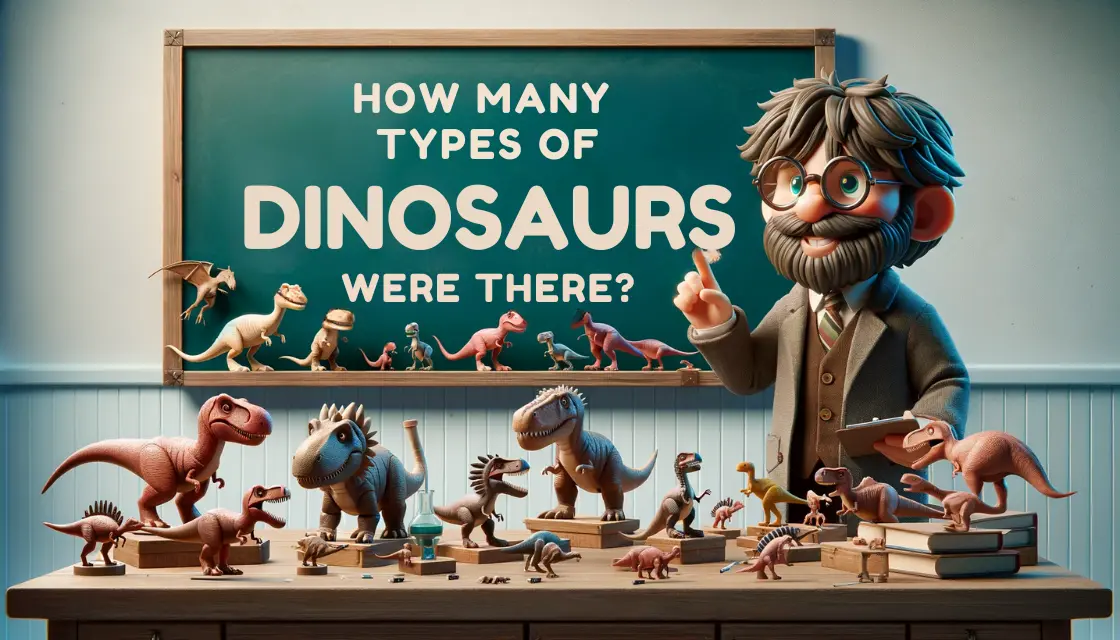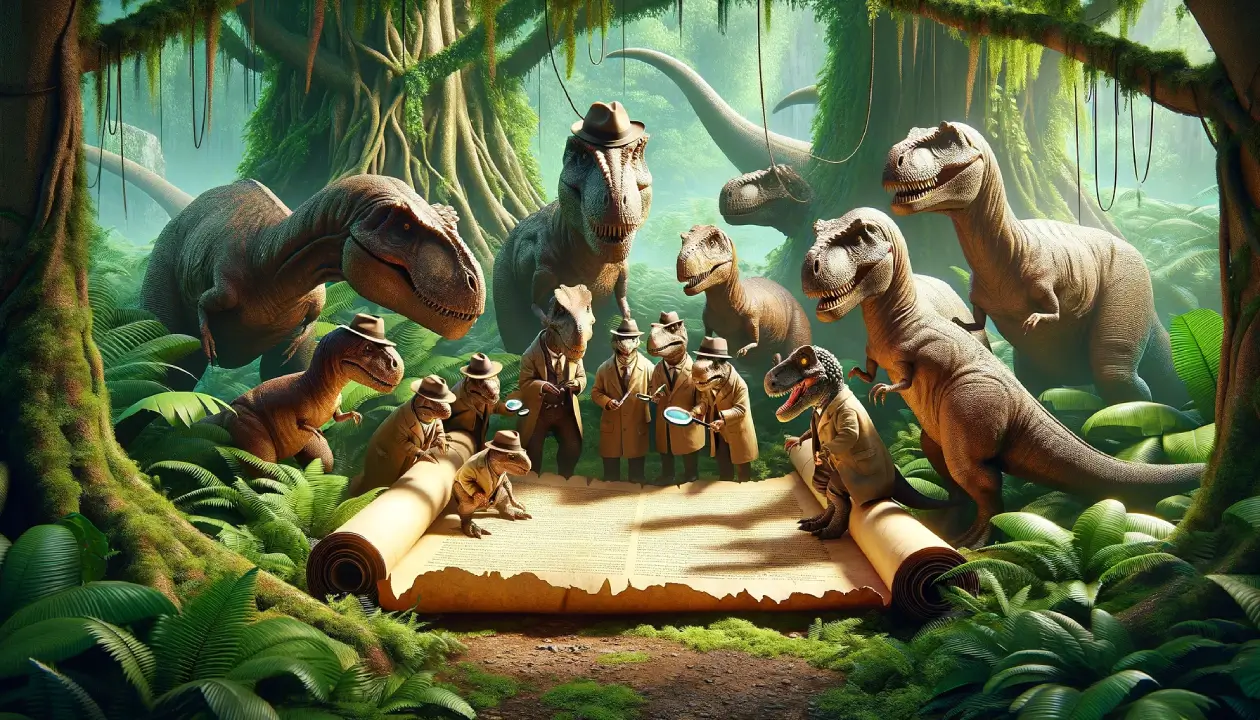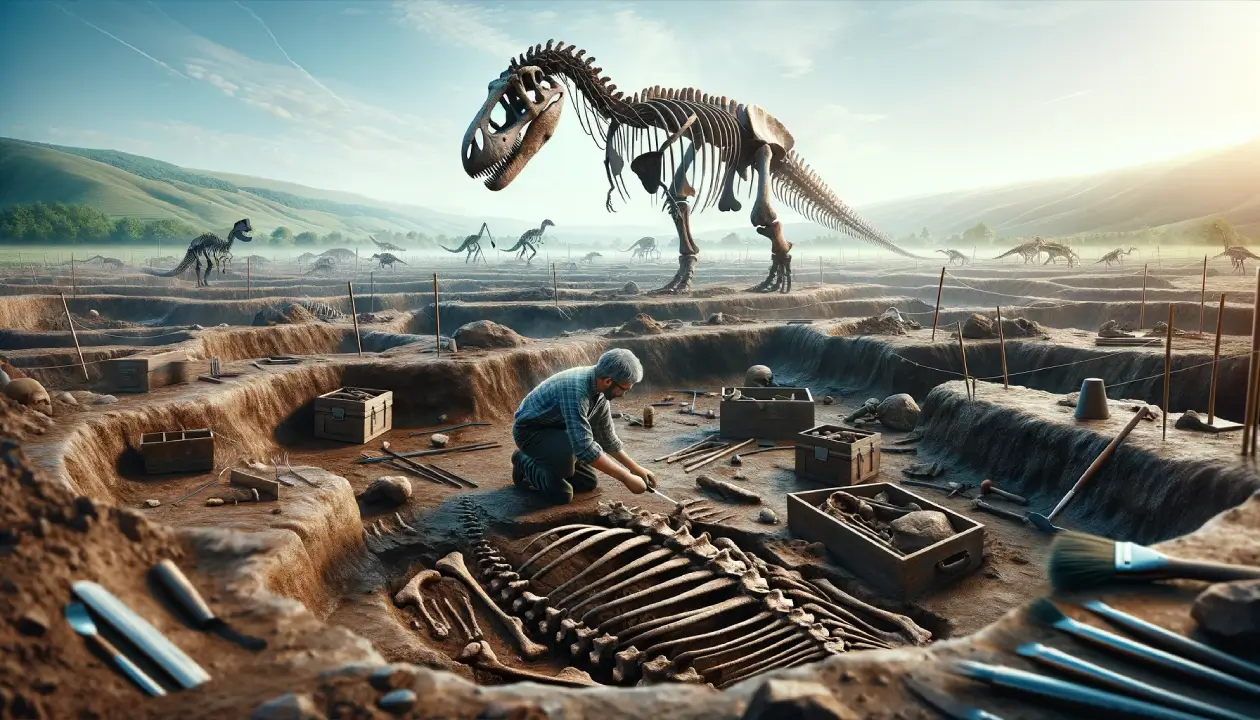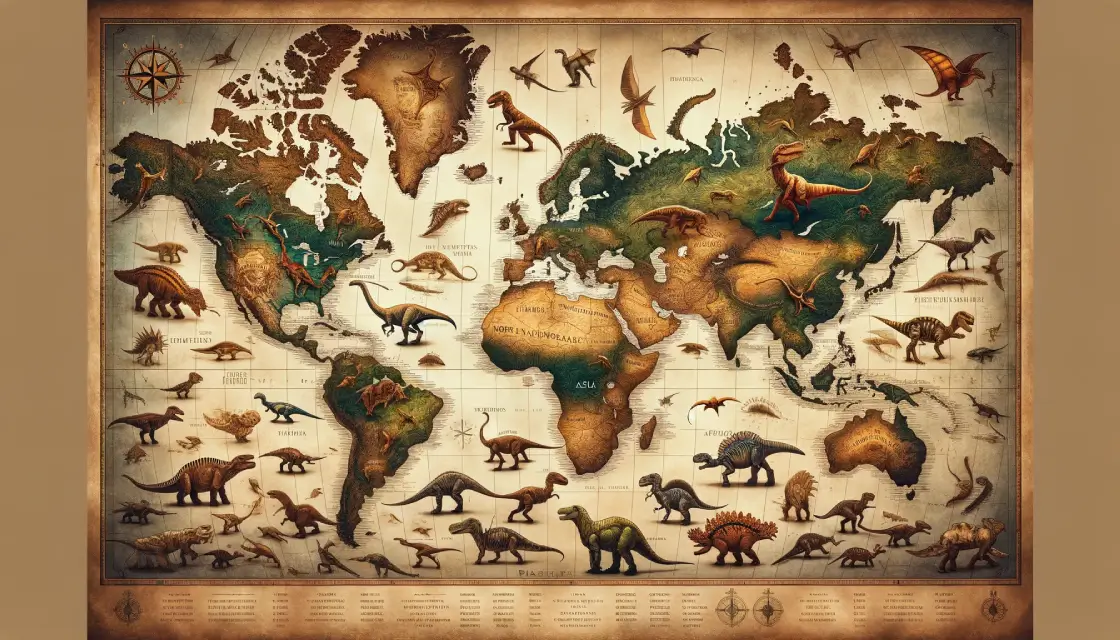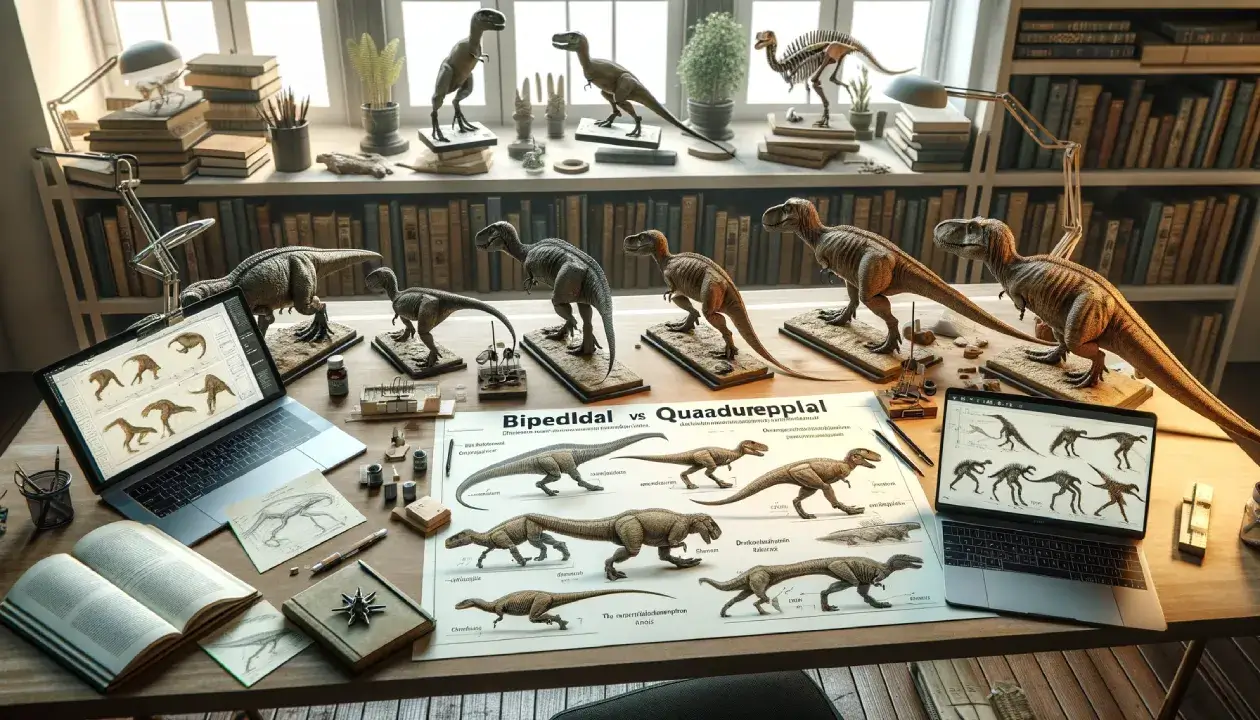To directly answer the question “How many types of dinosaurs were there?”, estimates range from around 300 valid dinosaur genera to over 900 distinct genera identified. There is no definitive number due to the incomplete fossil record and ongoing nature of paleontological research. However, there were certainly thousands of species spread across numerous types, sizes, and families.
Dinosaurs were a diverse group of reptiles that dominated Earth for over 160 million years until the Cretaceous-Tertiary extinction event around 66 million years ago. They ranged from giant long-necked sauropods to bird-like feathered theropods.
New species are still being discovered today as paleontology continues to uncover secrets of the distant past. Check out our article on what dinosaurs are.
| Key Takeaways | Details |
|---|---|
| Diversity of Dinosaurs | Dinosaurs ranged from the enormous Argentinosaurus to the tiny Microraptor, showcasing incredible size and shape variety. |
| Estimates of Genera and Species | There were about 300 valid genera and over 700 valid species of non-avian dinosaurs, with over 900 genera and 1,000 species including avian dinosaurs. |
| Incomplete Fossil Record | Many dinosaurs left no fossils, making it hard to identify all that existed. |
| Continual Discoveries | New species are regularly discovered, with over 50 new types identified in the last decade. |
The Diversity of Dinosaurs
Dinosaurs displayed an incredible range of sizes and body types. The largest was the enormous plant-eating titanosaur Argentinosaurus that measured over 30 meters (98 feet) long and weighed around 90,000 kilograms (99 tons). Small feathered dinosaurs like Microraptor were under 1 meter long and likely weighed less than 1 kilogram.
- Sauropods had long necks and tails with massive barrel-shaped bodies. Some early sauropods could stand on two legs while most walked on four.
- Armored dinosaurs like Ankylosaurus were protected by bony plates and clubbed tails.
- Horned dinosaurs sported elaborate horns and frills for display. Triceratops is the classic example.
- Theropods were mostly carnivorous bipeds like the iconic predator Tyrannosaurus rex. Later theropods evolved into birds.
| Group | Description | Example genera |
|---|---|---|
| Sauropods | Large, long-necked herbivores | Diplodocus, Brachiosaurus |
| Ornithopods | Bird-hipped herbivores | Iguanodon, Parasaurolophus |
| Theropods | Carnivorous bipeds | Tyrannosaurus, Velociraptor |
| Armored | Covered in bony plates | Ankylosaurus, Stegosaurus |
| Horned | Elaborate horns and frills | Triceratops, Styracosaurus |
Precisely determining the number of dinosaur species is challenging for several reasons explored in the next section. But they clearly displayed incredible diversity in the Mesozoic Era, with all kinds of unique physical features as covered in our article about what dinosaurs looked like.
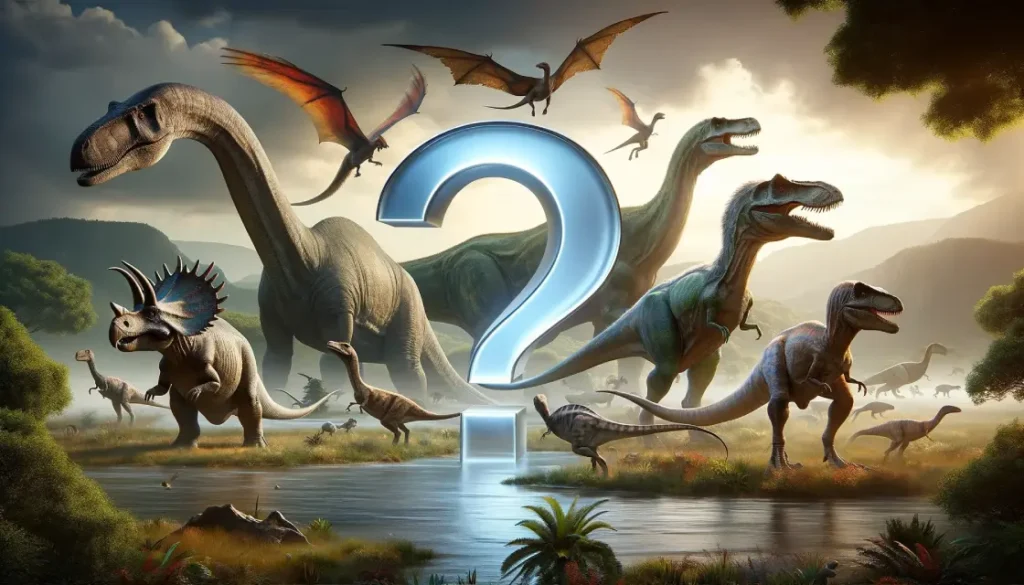
Estimated Numbers of Dinosaur Types
There are a few authoritative estimates on the total number of dinosaur genera and species. According to the American Museum of Natural History, there were approximately 300 valid genera and 700 valid species of non-avian dinosaurs.
However, other sources state there are over 900 distinct dinosaur genera and more than 1,000 species when including birds as avian dinosaurs.
While these numbers provide a reasonable range, calculating precise totals is challenging. The incomplete fossil record and our developing knowledge of dinosaur diversity affect estimations.
Factors Affecting Dinosaur Diversity Estimations
There are a couple key reasons why paleontologists struggle to pin down exact dinosaur diversity:
- The fossil record is incomplete: Fossilization is a rare occurrence. Many dinosaurs likely lived and died without leaving any fossils behind. Entire species may have existed that we have no record of.
- New dinosaurs are still being discovered: As paleontological excavations continue, new species emerge to add to the totals. Over 50 new dinosaur species have been identified in just the past decade.
- Geological time periods affect discovery: Dinosaurs lived for over 160 million years. Some time periods have left more accessible fossils than others due to geological changes.
- Taxonomy is complex: Debate continues over how to classify and group dinosaurs. Lumpers vs splitters approaches affect genus and species counts.
| Factor | Description |
|---|---|
| Incomplete fossil record | Fossilization is rare, so many dinosaurs left no fossils behind |
| Ongoing discoveries | New dinosaur species are still being found through excavations |
| Geological time periods | Some time periods have more accessible fossils due to geological changes |
| Taxonomy debates | Approaches to classification affect genus and species counts |
Further discoveries and analysis will shed more light on the totals. But the estimates provide a reasonable ballpark for now. The diversity was certainly impressive during the dinosaurs’ long reign.
Conclusion
In conclusion, determining the precise number of dinosaur genera and species is a challenging task for paleontologists. The incomplete fossil record and our still-developing knowledge of these prehistoric creatures means there is no definitive total.
The current estimates provide a reasonable range – likely a few hundred genera encompassing over a thousand species. But new dinosaurs are uncovered regularly, demonstrating the ongoing need for further excavations and analysis. Piecing together the full diversity of the dinosaurs’ 160 million year reign on Earth remains an open challenge.
There is still much to uncover about the numerous shapes, sizes, and lifestyles of dinosaurs from the distant past. As paleontological research continues, our understanding of dinosaur diversity will come into sharper focus. For now, we can appreciate the incredible variety that enabled dinosaurs to rule the Mesozoic Era.

